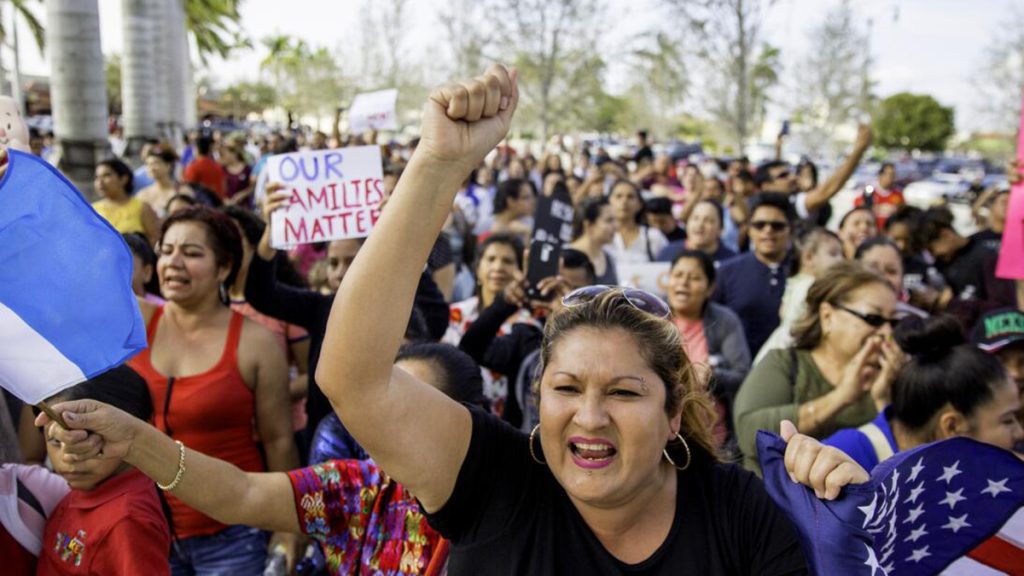
Photo: David Maris
The Importance of context, data, and expert sources in discussing Latino communities
And the proliferation of disinformation in these spaces
When journalists have to cover news that particularly affect or interest Latino communities, we cannot overlook providing the needed context. We cannot assume that everyone is aware of the history, reasons, and figures that provide a more accurate picture of what is being discussed. This is why we make an effort to include context in every article; every opportunity we have to explain the complex issues, laws, and phenomena that impact them.
In the guide for journalists on how to better meet the information needs of these communities that we are building, we emphasize that the data and information sources should not be overlooked. These sources can include organizations, researchers, and experts, both public and private, that provide context to the facts.
The areas needed are diverse, but we choose the most important points and take into account input from Factchequeado‘s allied media survey which we conducted in May 2023. We received 17 responses from 15 different organizations.
The questionnaire asked about 8 of the main topics where previous studies had identified misinformation or information gaps among the Latino population in the United States of America. Specifically, they were asked to assess the severity of information issues related to:
- COVID-19
- health topics
- administrative procedures or immigration processes
- political issues
- voting processes in elections
- climate change
- feminism and gender policies
- LGBTIQ+ rights.
For each of these topics, participants were asked, in addition to providing a score, to provide specific examples or reflections on the information problems they had encountered in their daily work and interactions with Latino communities.
For each one of the main 8 topics, we asked them to assess the amount of reliable information available for these groups, as well as how many disinformation claims they had experienced. Participants rated each issue between 1 (no disinformation or lack of trustworthy information) and 5 (a lot of disinformation or huge lack of trustworthy information). Our final takeaway is that there is not a lot of reliable information about these topics, but there is a huge amount of disinformation.
The average score is 3.71 for lack of trustworthy information, and 3.78 for disinformation content.
Here are the results:


These answers continue to guide us to include links to organizations that work with data and experts, with a focus on Latino communities when covering these communities. To read the report in English, click here.
How to use them in coverage
This time, let’s use coverage of immigration, immigration processes, and Latino communities as an example. When discussing Latino communities, Hispanics in general, there’s a tendency to think of them as immigrants, as people who are passing through or living irregularly without documents or permissions to reside in the United States. However, this is a mistake, and it’s the responsibility of every journalist covering these topics to remember that the number of Latinos and Latinas who are citizens by birth is increasing.
The data shows that 81% of Latinos and Latinas in the US are citizens, either by being born with U.S. citizenship or through naturalization. This means they have the same rights and responsibilities as any other citizen.
The Pew Research Center’s Hispanic/Latino division is dedicated to researching and communicating data that serves as a reliable reference for our work. The Census provides visualizations and breaks down specific data about this population, and the American Community Survey annually updates data that, according to its own definition, “helps local officials, community leaders, and businesses understand the changes taking place in their communities. It is the premier source for detailed population and housing information about our nation.”
Some of the data provided by “11 facts about Hispanic origin groups in the U.S.” from the Pew Research Center, which should become a permanent context, show that, according to the most recent estimates (2022), there are 63.7 million “Hispanics or Latinos” living in the United States, and in 2021, 32% of that population were immigrants, less than the 37% in 2010.
“Births to Hispanic parents in the United States outpaced the arrival of new immigrants in that period. As a result, the U.S.-born Hispanic population grew by 10.7 million, while the immigrant population grew by 1.1 million.” This data clearly shows that the vast majority of Hispanics and Latinos in the United States are U.S. citizens: 81% of them were citizens in 2021, compared to 74% in 2010.
Another data point that helps contextualize some situations is related to people living in the United States without immigration documents.
For example, at Factchequeado, we published a story explaining why the claim that “Illinois is now allowing undocumented foreigners to become police officers” is false.
Besides debunking the claim, we felt it was necessary to provide some figures as context. For instance, the total population of the United States is approximately 335 million people, and the estimate for undocumented individuals, according to the Migration Policy Center and Pew Research Center, is about 11 million, which is roughly 3.2% of the population.
In the guide we are building, we will include these and other sources, as well as the data they provide for each topic, to help you provide context and battle misinformation.
